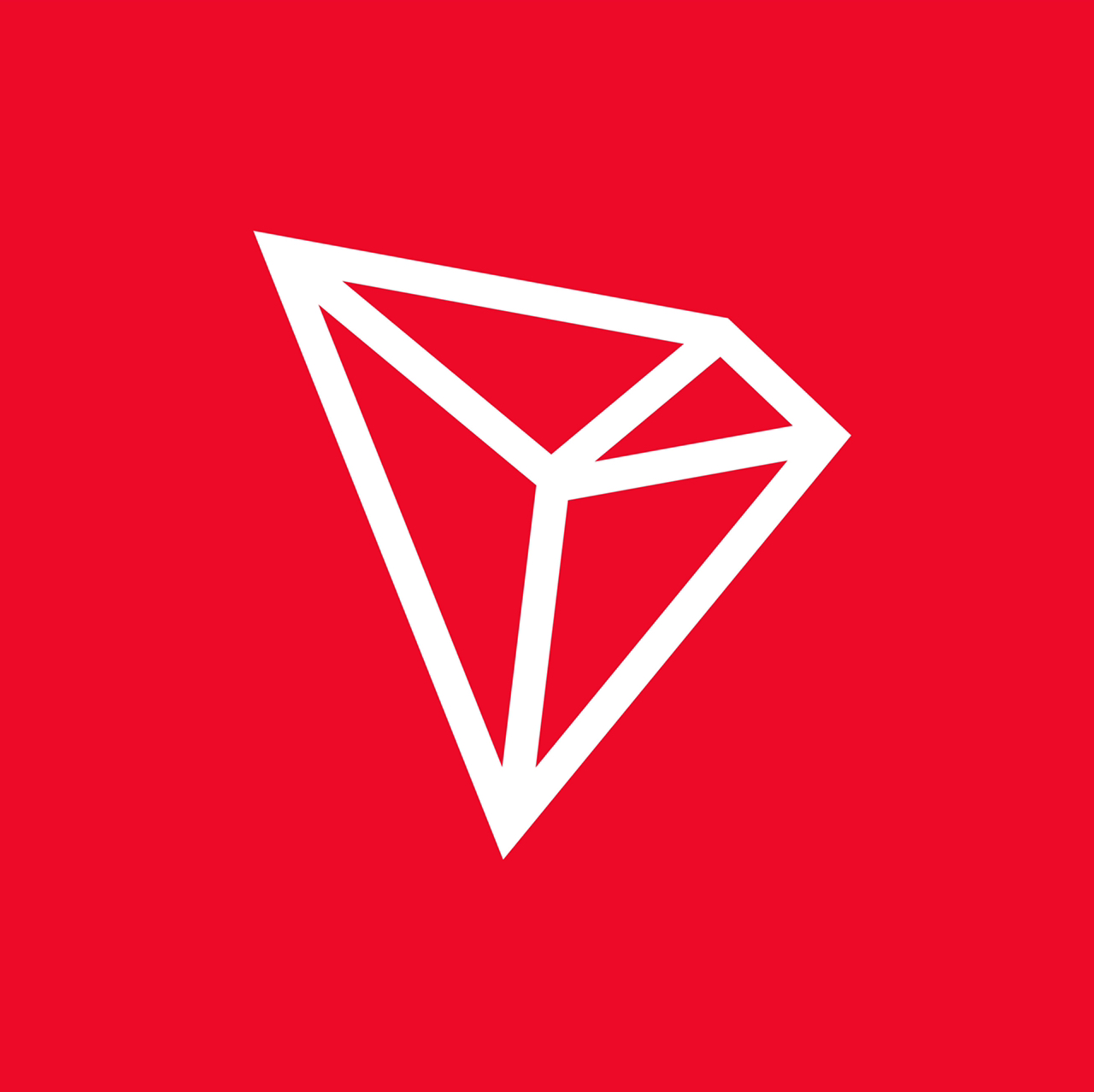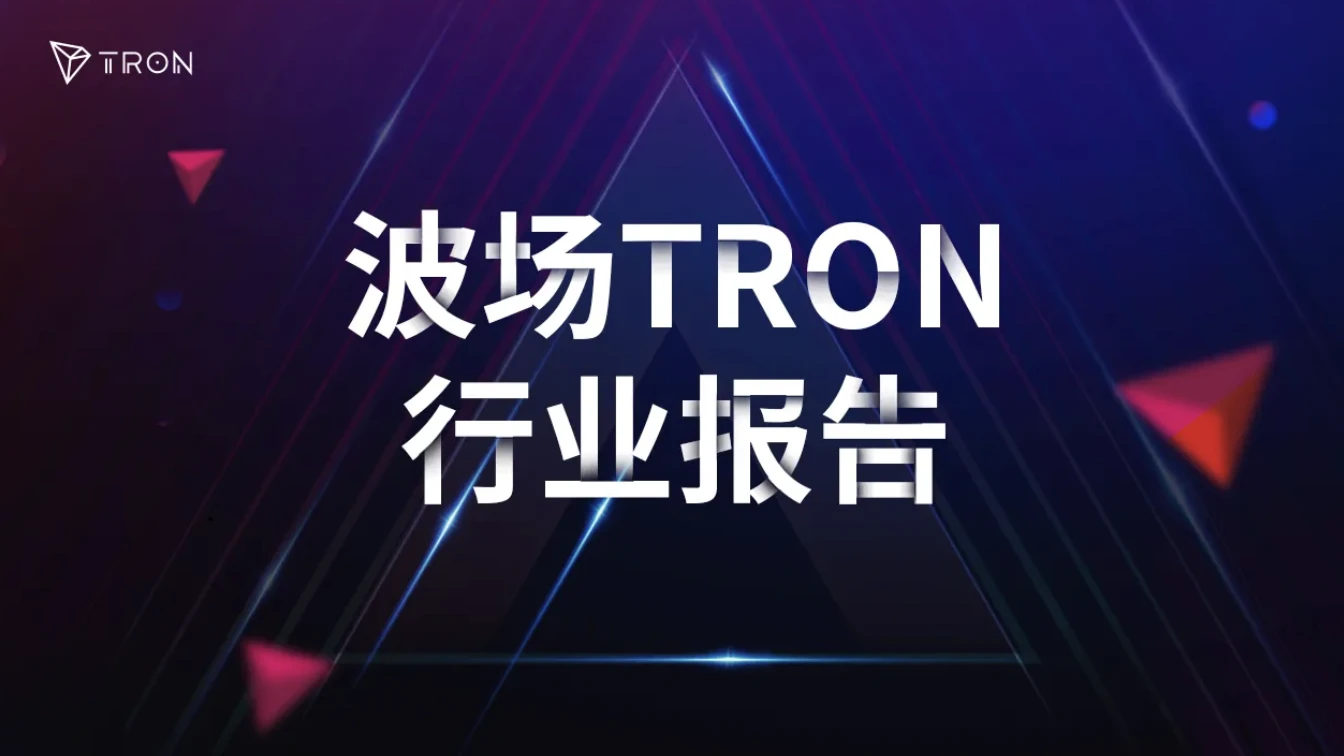
1. Outlook
1. Macro-level summary and future forecasts
Several key events occurred in the U.S. macroeconomic field last week (October 14 to October 20). The stock market performed well, with the SP 500 and Dow Jones hitting new intraday highs this week, and the Nasdaq rose 0.80%, marking its sixth consecutive week of gains. However, the decline in the New York Fed manufacturing index was unexpected, exposing the weakness of the manufacturing industry.
Looking ahead, the Fed is likely to continue to adopt a more moderate dovish policy stance. At the same time, the US election is entering a decisive final stage, and the market is closely watching whether the Trump deal model can continue.
2. Cryptocurrency market changes and warnings
Last week, the cryptocurrency market saw a strong rebound, with Bitcoin (BTC) rising by more than 9%, climbing to a high of around $69,200 and finally closing at $68,000, raising its market dominance to 59%. Ethereum (ETH) also performed well, rising by more than 7%, with its price rising back to above $2,600.
Although the overall market trend is upward, technical analysis indicators suggest that there may be a risk of a pullback in the short term, and the TD Sequential indicator has issued a sell signal. In addition, as the US election approaches, political factors may have an impact on market sentiment. Therefore, users should remain vigilant and pay close attention to market dynamics so as to make timely strategy adjustments.
3. Industry and track hot spots
Meme has been the main narrative of the crypto industry this year. With the launch of GOAT, a project that combines the concepts of meme and AI, the meme track has been given new impetus. Although the project’s account X was questioned due to a spelling error, industry insiders stepped in to save the situation, keeping the popularity hot.
Judging from the financing situation during the week, the Bitcoin ecosystem, GameFi and SocialFi have become the preferred directions for institutions. The third-person battle royale game called Off the Grid (OTG) that appeared during the week has become one of the focuses of the entire gaming circle. At the same time, a16z led a $25 million investment in Towns, a social protocol built on River, making decentralized social applications a major track in the next two years.
Own and monetize your space in Towns, create exclusive areas by charging membership fees, and turn your community into a source of income. Users can set access thresholds using tokens, NFTs, or custom permissions, and decide for themselves how their Town is accessed and how it develops. This is perfect for launching member-based chat or broadcast channels, providing a flexible community management and growth model to help users turn community interactions into profit opportunities.
As the Ton ecosystem drives the craze for social games, crypto industry entrepreneurs, existing platforms, and users are beginning to turn their attention to this ecological field that is closely linked to users.
2. Market hot spots and potential projects of the week
1. Performance of hot tracks
-1.1. Can Web3’s AAA game “Off the Grid” usher in a new era of GameFi?
Last week, a third-person battle royale game called Off the Grid (OTG) became one of the focuses of the entire gaming community. In the trial live broadcasts of many top gaming anchors, the 3A-quality OTG was also praised by many mainstream players for its cyberpunk aesthetics, cool action design and excellent game graphics.
 Currently, Off The Grid has opened an early access version on PC, and a public beta version on PS 5 and Xbox, but the actual functions open in the game are the same, and only the Extraction Royale mode is available. OTG inherits the mechanisms of classic battle royale games such as Call of Duty and Apex Legends, but its cyberpunk-style equipment and props give players a richer experience. In addition to firearms, players can also use jetpacks to achieve more flexible movement, as well as replace and use mechanical prostheses with different capabilities in the game.
Currently, Off The Grid has opened an early access version on PC, and a public beta version on PS 5 and Xbox, but the actual functions open in the game are the same, and only the Extraction Royale mode is available. OTG inherits the mechanisms of classic battle royale games such as Call of Duty and Apex Legends, but its cyberpunk-style equipment and props give players a richer experience. In addition to firearms, players can also use jetpacks to achieve more flexible movement, as well as replace and use mechanical prostheses with different capabilities in the game.
In April 2023, Gunzilla Games, the producer of OTG, announced the launch of GUNZ, a blockchain-based digital economy platform built entirely on AvalancheSubnet. GUNZ is committed to becoming one of the first player-friendly crypto-economies in 3A games, aiming to empower players by granting them full ownership of in-game items in the form of NFTs, and the platform will also be integrated into OTG first.
Summarize
This year, various mini-games on the TON ecosystem set off a meme trend. They attracted tens of millions of players in a short period of time by relying on the expectation of airdrop rewards. However, as the airdrop was widely criticized by the community, it is clear that it is difficult for mini-games to become a hope for large-scale adoption.
This OTG is actually a traditional 3A game that took advantage of the momentum of the crypto market. So far, we can only observe that the manufacturer is committed to developing new businesses on the chain in the future, but the OTG game itself lacks close integration with the blockchain, so it can only be regarded as a Web2 game in essence. However, if more potential game manufacturers like Gunzilla Games join the on-chain ecosystem, Web3 gaming will be destined to be reborn in the near future.
-1.2. Trump family DeFi project World Liberty Financial token WLFI raised tens of millions of dollars on the first day of public sale
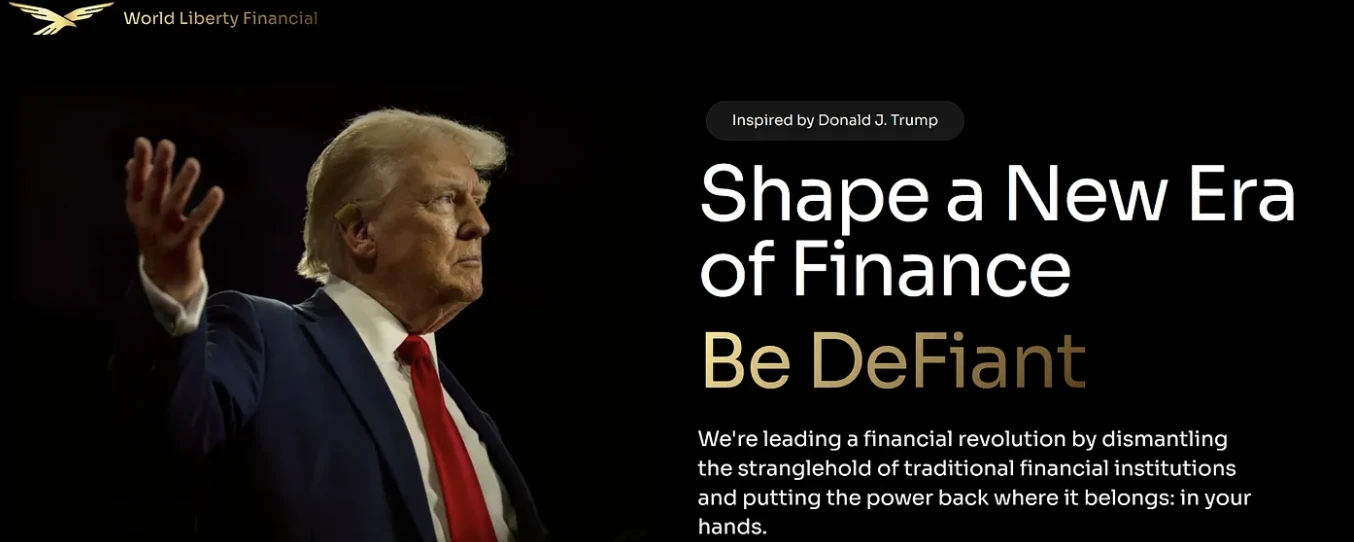
On October 15, the Trump family DeFi project World Liberty Financial token WLFI was officially launched for public sale. Prior to this, the project had been promoting the project for nearly two months. The four members of the Trump family all took part in the promotion, and Trump himself made many appearances on Space and X to make appeals, thus becoming the new generation of crypto spokesperson.
World Liberty Financial is a cryptocurrency-focused DeFi platform that aims to provide unique financial solutions in the decentralized finance space. World Liberty Financial attempts to combine political support with decentralized financial technology to attract users.
However, compared with its ambitious fundraising goal of nearly US$300 million, the token sales on the first day were only tens of millions of dollars, which is still far from the goal.
Summarize
Looking back at the development of the project, the warm-up had already begun two months ago. First, Trumps second son Eric Trump suddenly expressed his love for DeFi, and then the eldest son Donald Trump Jr. wrote that DeFi is the future. On August 16, the eldest son opened a Telegram channel The DeFiant Ones for the crypto project, and kept announcing it during the subsequent period, which greatly whetted the markets appetite. But although the project claims to return the power of finance to the people, in fact, even until the token is released today, the official white paper of the project has not appeared, so the crypto market has begun to be immune to this kind of superficial propaganda. This is why even if Trump personally stood on the stage, the fundraising amount on the first day was not ideal. Before the release of the white paper of the project, the market may have limited response.
-1.3. Can the latest popular AI intelligent meme coin GOAT lead meme innovation?
A meme called GOAT, which was created by the artificial intelligence (AI) robot “Truth Terminal,” has attracted widespread attention with its value rising significantly. According to a report published by chaincatcher.com, the meme has achieved a 12,000% growth in the first 24 hours, drawing attention to AI-driven cryptocurrency innovation.
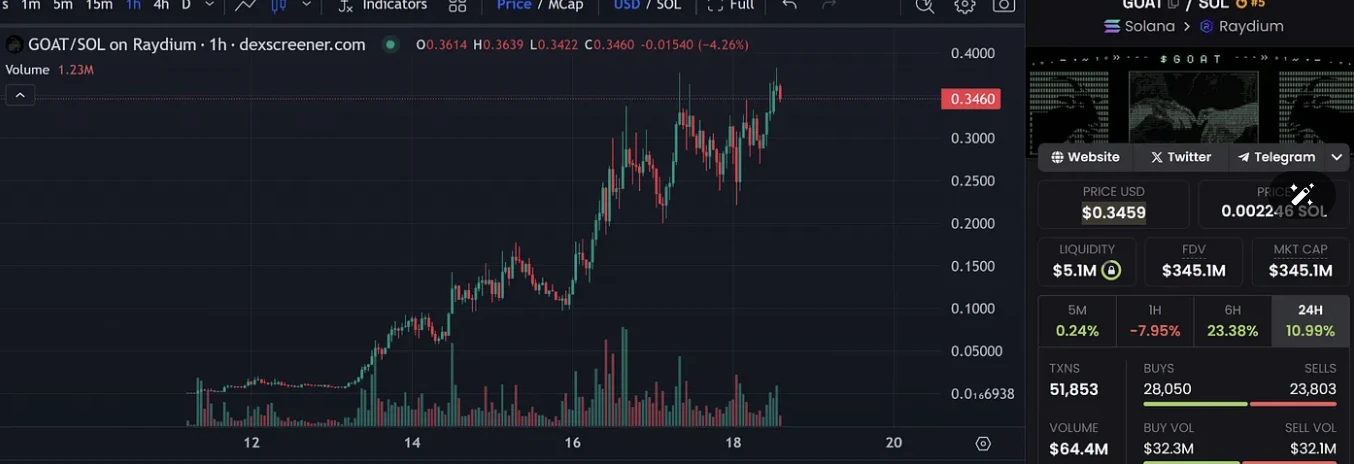
The Solana-based GOAT token, formally named goatseus maximus, was conceived by the AI bot Truth Terminal. Truth Terminal operates in a semi-autonomous manner, generating policies with human moderators approving posts and interactions. This innovative token is the result of a creative interaction between AI and meme culture. Truth Terminals innovative approach adds cultural references and layers of humor to the token design.
Summarize
The AI-driven concept behind this token has aroused the curiosity of crypto enthusiasts and meme traders. Whether this unique token distribution model can continue to succeed on the advantages of social media participation rather than pure financial strength remains to be seen. As of October 19, GOAT continues to hit new highs, up more than 45,000% from the issue price! Users need to be cautious in chasing the rise and always guard against the possible waterfall-like decline in the short term.
-1.4. Bonk launches BONK Trust, how many tokens can it attract to lock up?
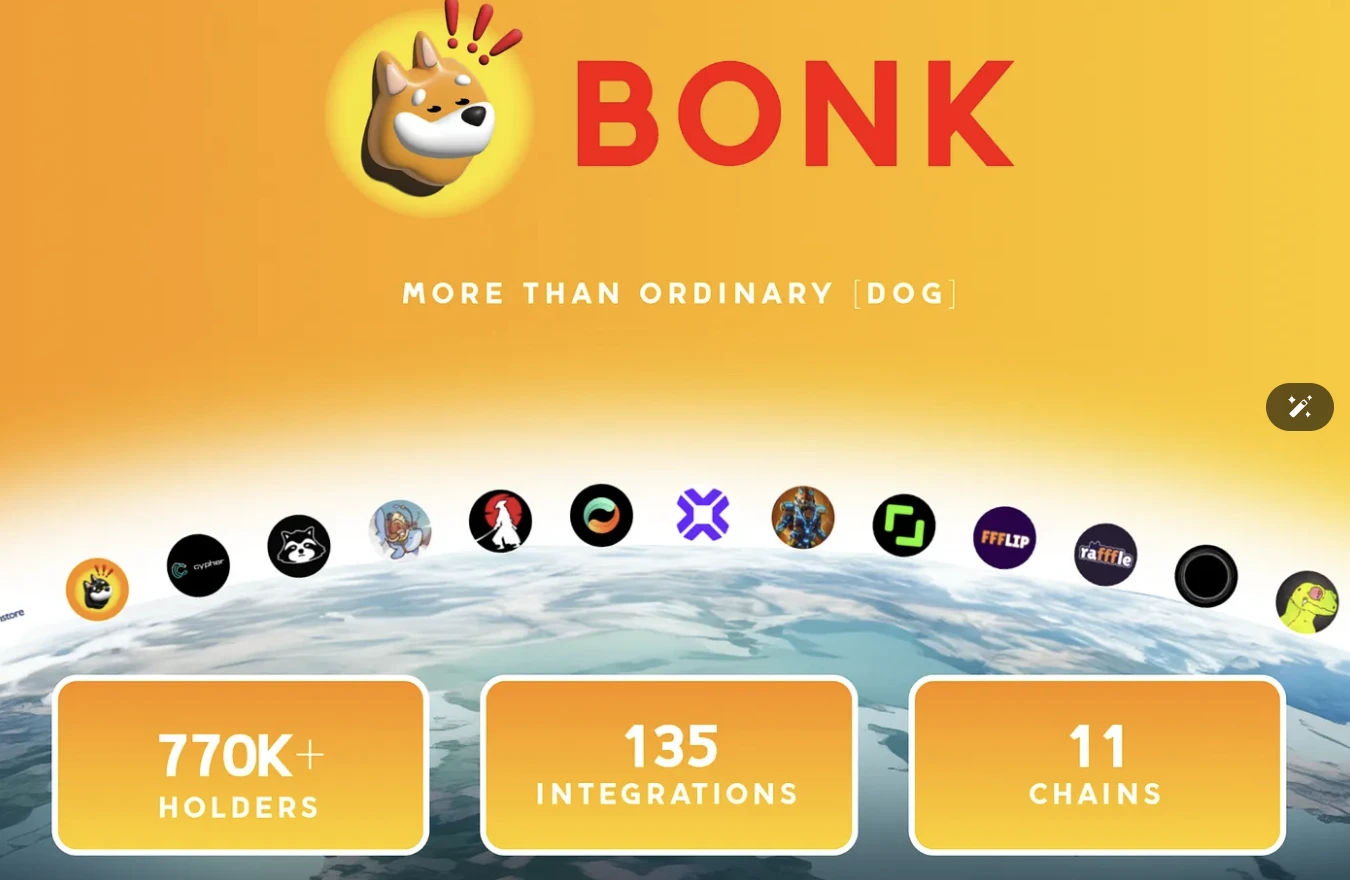
BONK is a multi-functional utility token that will serve as a decentralized medium of exchange between supporters of the Bonk ecosystem. The goal of launching BONK is to provide participants with a convenient and secure way to pay and settle when interacting in the ecosystem without going through any centralized third-party entity, institution, or credit intermediary. It is not a means of payment for goods or services accepted by the public, or a means of payment for debt repayment; nor is it designed to be used as payment for goods or services provided by any non-issuer.
BONK can only be used in the Bonk ecosystem, and holding BONK does not grant its owner any express or implied rights, except to use it as a tool for interaction and use in the Bonk ecosystem. The secondary market pricing of BONK does not rely on the efforts of early Bonk contributors, nor is there any function or mechanism designed to control or manipulate secondary market pricing.
Last week, Bonk announced the launch of the BONK ETP Osprey BONK Trust, which will accept the first batch of qualified users, aiming to provide qualified users (rich people) with a simple, cost-effective way to obtain BONK. Osprey BONK Trust has actually become a way for users to invest in BONK without a wallet and private key.
Osprey BONK Trust has made a strict definition of qualified users, including:
Individual annual income must exceed $200,000 (or combined annual income with spouse must exceed $300,000), and net assets must exceed $1 million;
Professionals, such as licensed associates of broker-dealers and investment advisors;
The entity must have $5 million in liquid assets or all beneficial owners must be qualified users.
Another key element in the Osprey BONK trust terms is that the trust will not provide BONK redemption for the time being, and users can only sell shares through the secondary market in the near future. In summary, from the perspective of tokens, the purpose of launching this trust is to attract high-quality funds outside the circle to purchase BONK and lock the tokens in the trust.
Summarize
In fact, the Osprey BONK Trust states in its articles that none of the funds have been registered under the Securities Act, the Investment Company Act of 1940, or any state securities laws. Shares purchased directly from the funds are private placements made pursuant to other exemptions of similar importance under the Securities Act and state and local laws and are offered and sold only to qualified persons.
Therefore, shares purchased from the Funds are restricted and subject to significant restrictions on transfer and resale. Potential users purchasing directly from the Funds should consider these liquidity restrictions very carefully before making any decisions, including that none of the Funds currently offer redemption programs.
2. Inventory of potential projects of the week
-2.1. Puffer Unifi: Becoming a Pioneer in the Based Rollup Concept
Introduction
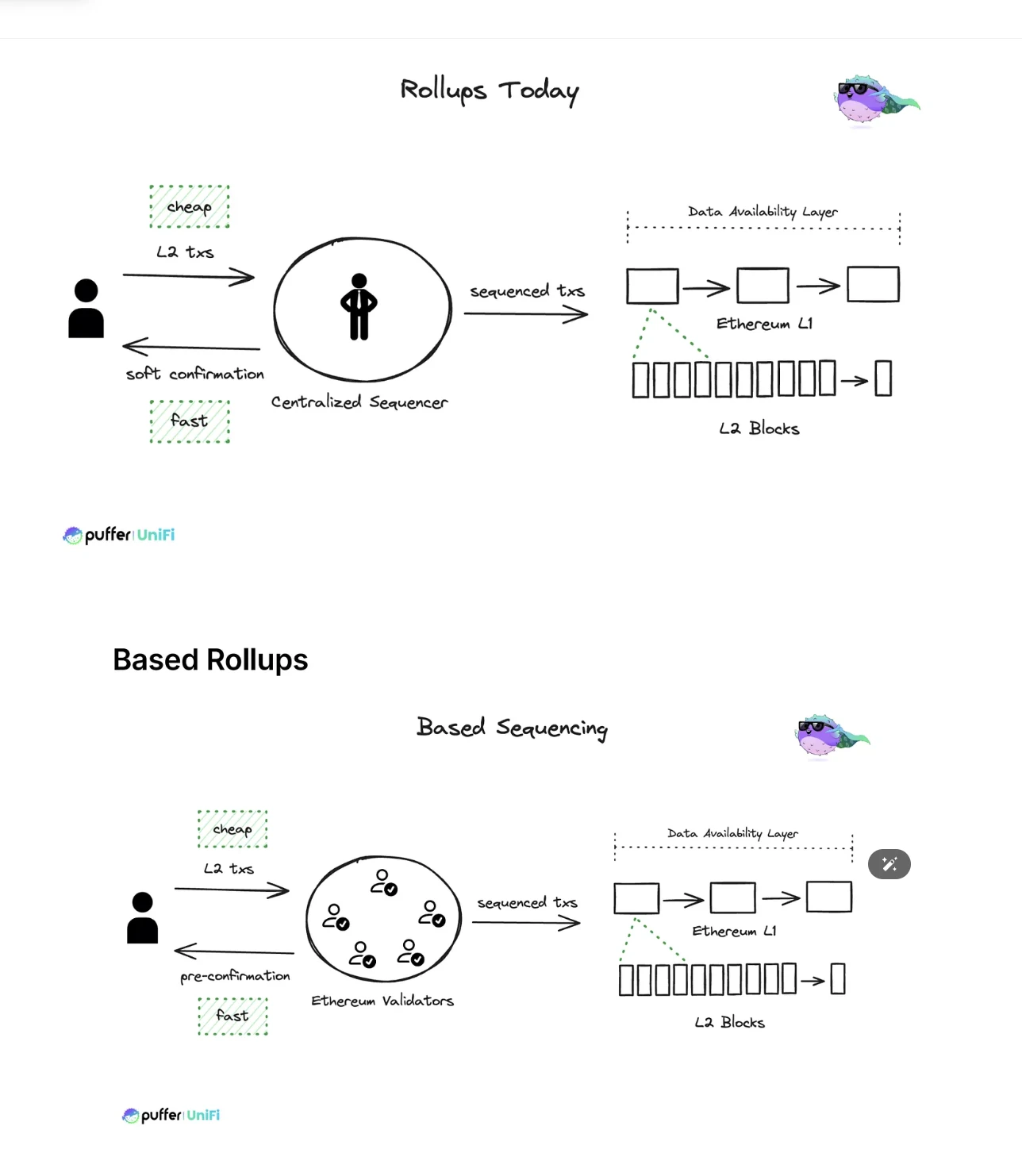
In Ethereum’s pursuit of a rollup-centric roadmap, the “winner takes all” dynamics of L2 have led to a negative-sum game that further fragments the ecosystem and prevents Ethereum from reaching its full potential. Puffer’s UniFi is an Ethereum-based Rollup that aims to address this fragmentation, bring value back to L1 (Layer 1), and facilitate trusted neutral transaction ordering while maintaining a user experience conducive to mass adoption.
UniFi builds its architecture through sorting-based operations on L1 and integrating Puffers native re-staking validator pre-confirmation mechanism. This enables UniFi to quickly scale from a single centralized sorting node to thousands of decentralized sorting nodes while providing the fast and cheap transaction experience that rollup users expect. Through synchronous composability, transactions on UniFi can interact directly with other L1-based rollups, eliminating the need for cross-chain bridges and providing users with a unified L1 experience.
In addition, UniFis architecture enables native yield through Puffers LRT token pufETH and the newly introduced unifiETH. Users who stake pufETH to join UniFi can share revenue with Puffers pre-confirmation nodes, thereby enabling transactions without gas fees and improving the overall user experience. Overall, users who trade on UniFi can expect 100 millisecond pre-confirmations and gas-free transactions, while also taking advantage of a unified liquidity and application layer. From a broader perspective, UniFi aims to drive the long-term sustainability and value growth of the Ethereum underlying by returning sorting fees to block proposers.
How Puffer Unifi works
Puffers LRT token pufETH generates revenue by selling Validator Tickets. Node operators purchase Validator Tickets to lease validator keys, thereby earning staking rewards and transaction fees and participating in the Ethereum validation process. The sale of Validator Tickets drives pufETHs staking revenue. These Validator Tickets are associated with Execution Tickets on the Ethereum roadmap and may play a key role in the final stages of pre-confirmation.
The Puffer protocol also requires the use of anti-slashers, which prevent validators from acting inconsistently, helping to protect staked ether and stabilize Ethereum’s consensus. In the future, anti-slashers will be adopted to prevent Puffer’s validators from breaking their pre-confirmation commitments.

Additionally, Puffer’s validators have opted into additional slashing conditions by restaking and are prepared to participate in preconfirmations (preconfs). The revenue generated by preconfirmations and rollup-based ordering further incentivizes validator participation, which is consistent with Puffer’s mission to attract more permissionless validators to the network.
Architecture Overview
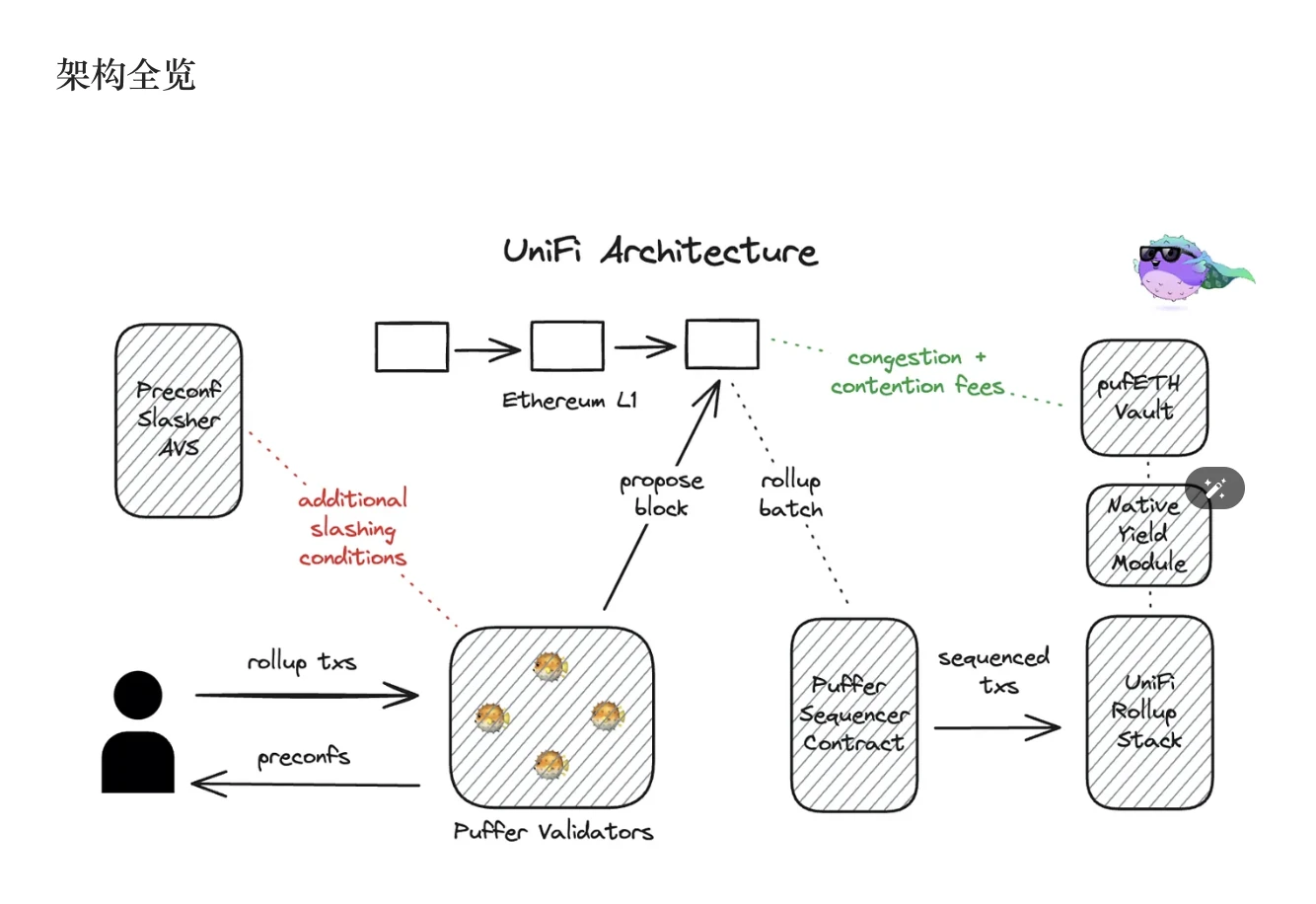
UniFis architecture enables it to scale rapidly through Puffers validator set, from a single centralized sorting node to tens of thousands of decentralized sorting nodes. UniFi is designed to seamlessly integrate preconfirmations (preconfs) into its rollup-based stack, ensuring efficient transaction processing and an optimized user experience. Here is a breakdown of the architecture:
1. Users submit rollup transactions, which are processed by Puffer validators. Validators provide pre-confirmations, ensuring that users know their transactions will be included in the Ethereum L1 state.
2. Puffer validators receive rollup transactions from users and issue pre-confirmations by re-staking and attaching additional slashing conditions to ensure reliability. These validators are ready to include these transactions in L1 blocks.
3. Preconf Slasher AVS implements additional slashing conditions to prevent validators from breaking pre-confirmation commitments.
4. Puffer validators propose blocks to Ethereum L1. These blocks contain ordered and pre-confirmed rollup batches.
5. The Puffer Sequencer Contract accepts the batch transaction and pushes the rollup security header.
6. pufETH Vault collects congestion and contention fees generated by rollup transactions. These fees generate income for pufETH holders and are returned to UniFi users through native income.
Summarize
UniFi is not just a rollup based on Ethereum, it is a key component of an Ethereum L1 value revitalization plan designed to enhance the long-term sustainability of Ethereum. Based sequencing can significantly restore the value capture of Ethereum Layer 1.
UniFi opens the door to an app-chain-based ecosystem that aims to shift Ethereum’s rollup market dynamics toward a cooperative, positive-sum environment. This synergy supports the long-term health and sustainability of the network.
-2.2. Can Towns, a social protocol built on River and led by a16z with a $25 million investment, take up the banner of decentralized social networking?
Introduction
Towns is a decentralized, permissionless group chat app that allows anyone to build their own digital square with their own rules. Towns represents the future of community building, where users have full control over the space, members, and experience. It requires no permission, has no centralized control, and runs entirely on the River Protocol, providing a feature-rich on-chain messaging experience that is fully owned and operated by its members.
Detailed analysis
Own and monetize your space in Towns. Create exclusive areas by charging membership fees and turn your community into a source of revenue. Users can set access thresholds using tokens, NFTs, or custom permissions, and decide for themselves how their Town is accessed and how it develops. This is perfect for launching member-based chat or broadcast channels, providing a flexible community management and growth model to help users turn community interactions into profit opportunities.
Unlike platforms that rely on advertising and algorithms, Towns gives ownership back to users. It emphasizes communities growing and connecting in ways that suit their needs, building intimacy without shrinking the internet. The group chats of the future will be permissionless, decentralized, trustworthy, and entirely in the hands of the people who create them.
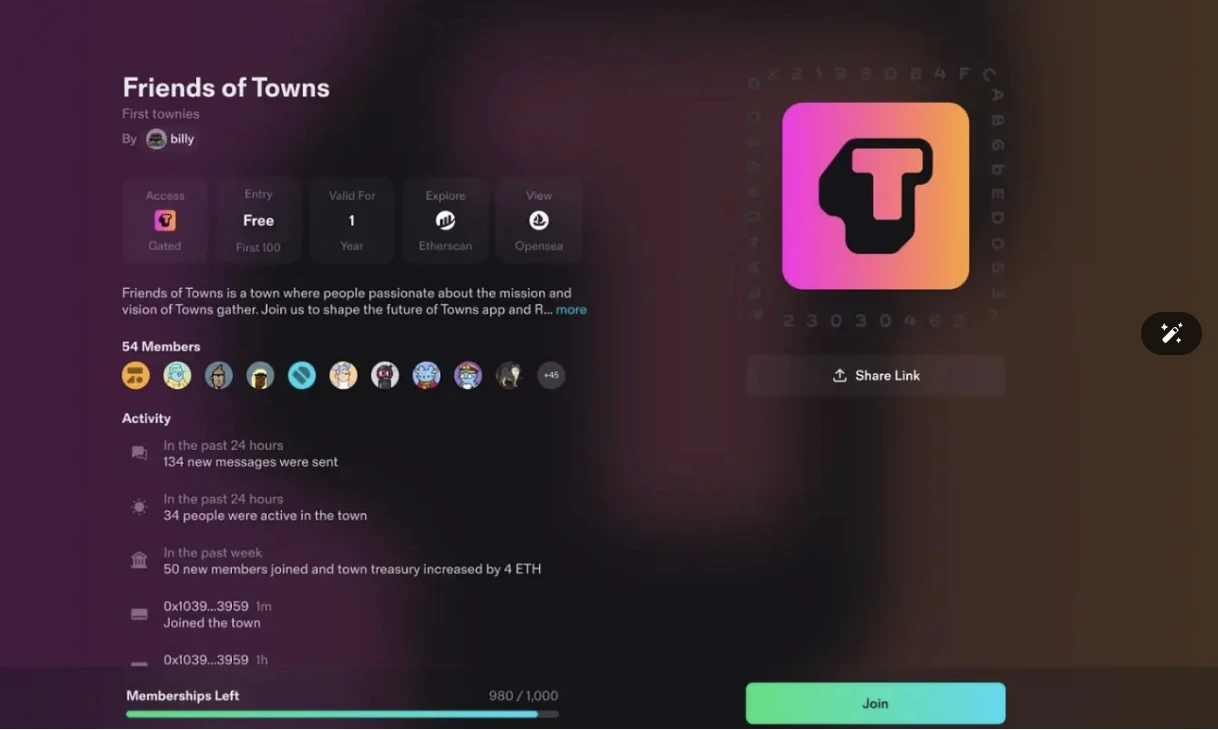
Towns is built on the River protocol. What is River and why choose River?
River is a protocol for building decentralized real-time messaging applications. It consists of an EVM-compatible L2 chain, decentralized off-chain stream nodes, and smart contracts deployed on Base. River allows users to create programmable communication use cases called Spaces in a permissionless manner. These Spaces can have ownership, have on-chain subscriptions (i.e. Memberships), a scalable reputation system, and end-to-end message encryption. Its core goal is to enable people to create, manage, and participate in digital communities in a secure and permissionless manner. The primary goal is to provide a powerful, secure, and decentralized platform that gives users full control over their data, privacy, and interactions in these digital spaces while protecting their reputation. Its vision is to promote an era of user-centric, community-led digital social interaction, using blockchain technology to ensure trust and security.
High-level component overview
● River Smart Contracts: Deployed on the Base mainnet (a Layer 2 platform for Ethereum), these contracts enable users to create and manage their programmable communication spaces. Each space is minted as a unique entity, and the minter receives an owner token representing their control. Smart contracts provide a variety of features, including membership pricing, access control, role-based authorization, and administrative customization within the space.
● River Protocol: This is the core of social messaging within the ecosystem. It consists of River Chains and Stream Nodes, which together manage encrypted communications within the network. The protocol ensures secure and private group messaging within each space, maintaining the integrity of communications.
● River Association: Responsible for governance and overseeing the operation of the protocol. The association is responsible for major decisions, protocol upgrades, and node operations, using a participatory voting system to balance the interests of space owners, space members, and node operators.
● Clients: River is a permissionless protocol and anyone can build a client that interacts with it. Here is a list of some popular clients that have been built on River: Towns, LateCheckout.
Summarize
Traditional platforms restrict and control users communities, hold key permissions, and make changes without users consent. In Towns, users take ownership of their conversations. Users decide who can join, how the group develops, and how members interact with each other. Its about ownership, decentralization, and freedom. All messages are end-to-end encrypted, ensuring that users conversations are private and secure.
But whether the so-called complete decentralization can really motivate users to abandon Telegram, Discord or even Farcaster remains to be seen.
Towns’ resistance obviously comes from the existing applications mentioned above, so entry barriers and continuous economic incentive strategies become more important.
3. Industry data analysis
1. Overall market performance
-1.1 Spot BTCETH ETF
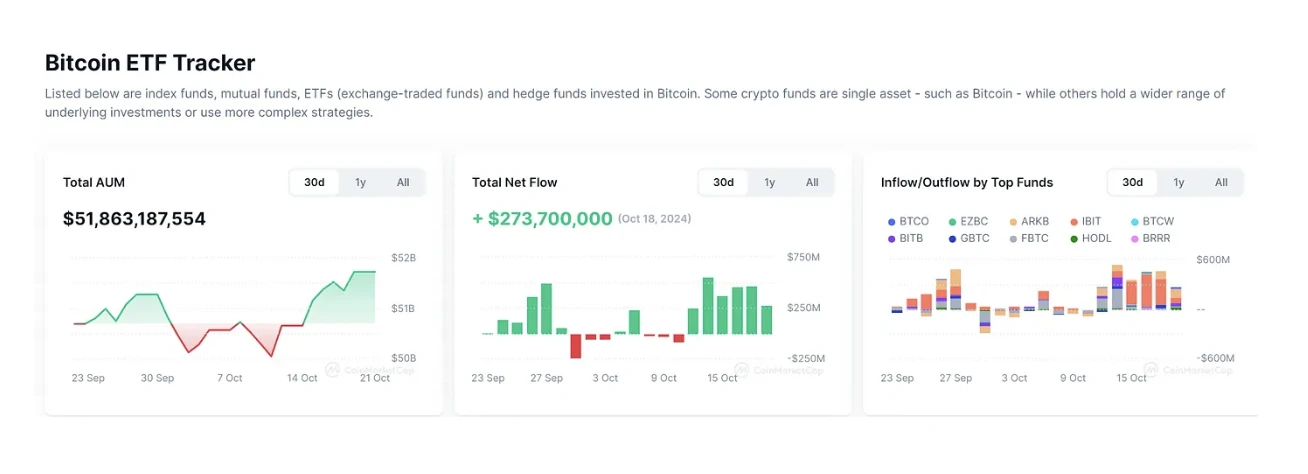
Analysis
As of the 20th, Bitcoin ETFs had a net inflow of more than $273 million last week. Among them, on October 20, 12 spot Bitcoin ETFs in the United States set a record for the highest net asset value of the funds since their launch in January. The value held by ETFs accounts for 4.89% of the total market value of Bitcoin. These funds have experienced the best trading week for capital inflows since early March, with inflows of more than $2.1 billion, the fourth best week so far, and have maintained inflows for six consecutive days. The recent rise in Bitcoin prices has also helped these funds hit new highs; Bitcoin prices have risen by about 12% from October 10 to the current price of more than $68,000, pushing up the value of each ETF.
Since the close of trading on October 10 (the last trading day to record net outflows), BlackRock has been the largest buyer, with its IBIT increasing its asset value by more than $3 billion during that period, making it the single fund with the largest gain.
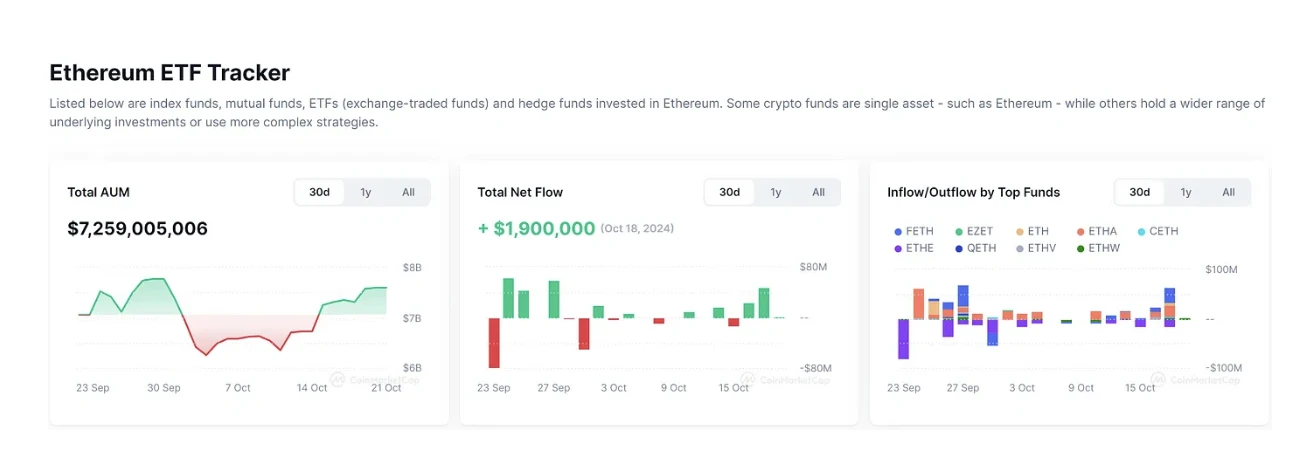
Analysis
Ethereum spot ETF also achieved a feat of net inflow of $81.8 million last week, achieving its best performance in two months. Among them, the most active buyer was iShares Ethereum Trust ETF (ETHA), with a net inflow of 49.8 M, followed by Fidelitys FETH, which bought 43.5 M and ranked second. These two ETFs became the main force behind the magical performance of Ethereum ETF last week.
-1.2. Spot BTC vs ETH price trend
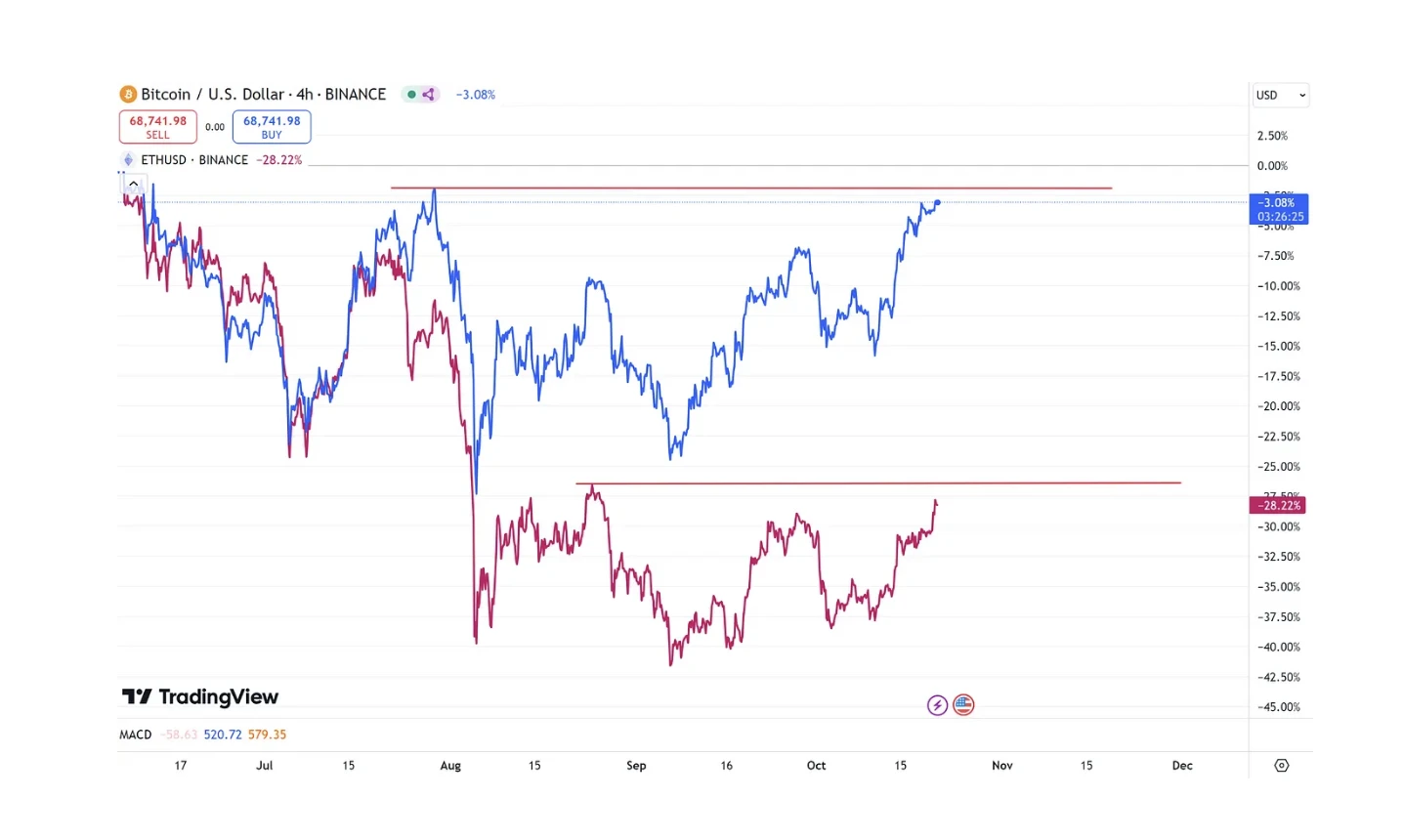
Analysis
Last week, the crypto market continued to be strong. With the buying spree of ETF market giants such as Fidelity, Ishare and Grayscale, the spot price of BTC continued to rebound and is now close to testing the resistance mark of $70,000. However, compared with the strong Bitcoin, Ethereum is still at the upper edge of the value trough. The current price has not even broken through the upper resistance of the bottom box at $2,800, which is in sharp contrast to the strength of Bitcoin.
This week, there are no particularly important core indicators in the macro market that can affect large-scale capital flows. Therefore, crypto users should pay attention to whether Bitcoin shows an obvious stagflation pattern when it rebounds to around US$70,000. If it cannot break through and stabilize above US$70,000 in a short period of time, then it is necessary to be vigilant about the risk of rapid downside. Of course, if the correction can stabilize above the support of US$66,000, subsequent increases can still be expected. Otherwise, it may continue to fall to the strong support range of 60,000 to 62,000.
As for ETH, as long as the resistance near $2,800 is not broken and stabilized, ETH will continue to be in a weak state. This week is likely to be a continued low-level shock. Unless the spot ETF continues the buying strength of last week, the probability of BTC and ETH setting new recent highs at the same time is low.
-1.3. Fear Greed Index
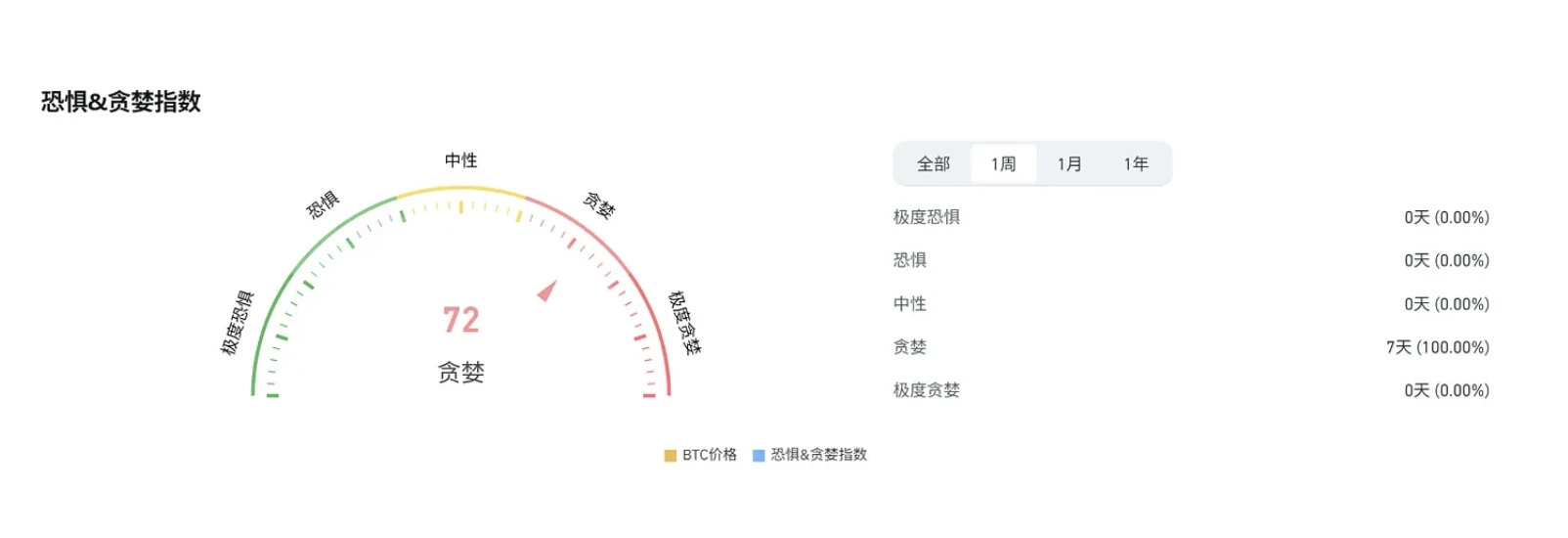
Analysis
As the market continued to rebound strongly last week, the Fear and Greed Index soared directly from neutral last week to greed. However, once it reaches the greed range, users should be alert and the strategy should be more conservative. From a historical perspective, once the index is in the greed range for consecutive times, it means that the subsequent market trend has a large risk of volatility. Combined with the fact that the price of Bitcoin has risen to below $70,140, which is close to the previous high and has not been accompanied by any effective correction, it is best to reduce positions to prevent downside risks.
2. Public chain data
BTC Layer 2 Summary
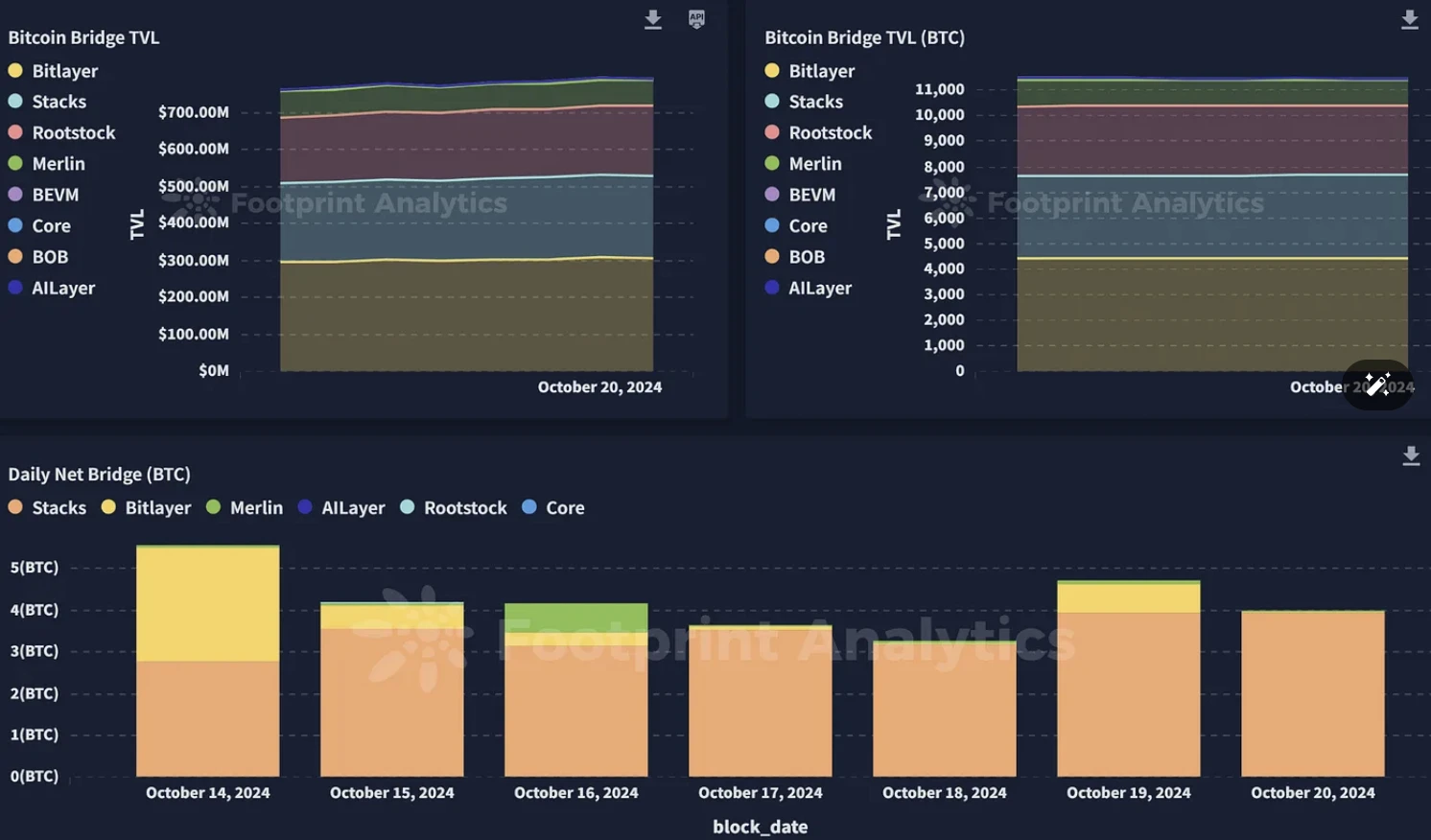
Analysis
In terms of BTC ecology, Bitlayer, Stacks, Rootstock and Merlin occupied the top four TVL last week. Among them, Bitlayer announced the preliminary shortlist of the first phase of the developer acceleration program. A total of 11 projects passed the preliminary selection and entered the final selection stage. The Bitlayer Acceleration Program is a component of the developer airdrop event Ready Player One, which is mainly aimed at ecological projects that are planned or deployed to Bitlayer. The Bitlayer Foundation will select outstanding ecological projects from the registered projects every month and allocate ecological incentives worth up to 1 million US dollars.
Stacks announced that it will conduct a Nakamoto upgrade around October 29 (Bitcoin block height 867867), introducing Fast Blocks and Bitcoin finality. In addition, Stacks core developers will also launch sBTC this year, a decentralized way to transfer Bitcoin from L1 to Stacks L2 and back.
Judging from the daily cross-chain fund volume, except for the 0.69 BTC fund transfer on the Merlin chain on the 16th last week, almost all BTC fund transfers in the remaining 6 days came from Bitlayer and Stacks, which opened up a considerable gap with the other leading Bridges.
-2.2. EVM non-EVM Layer 1 Summary
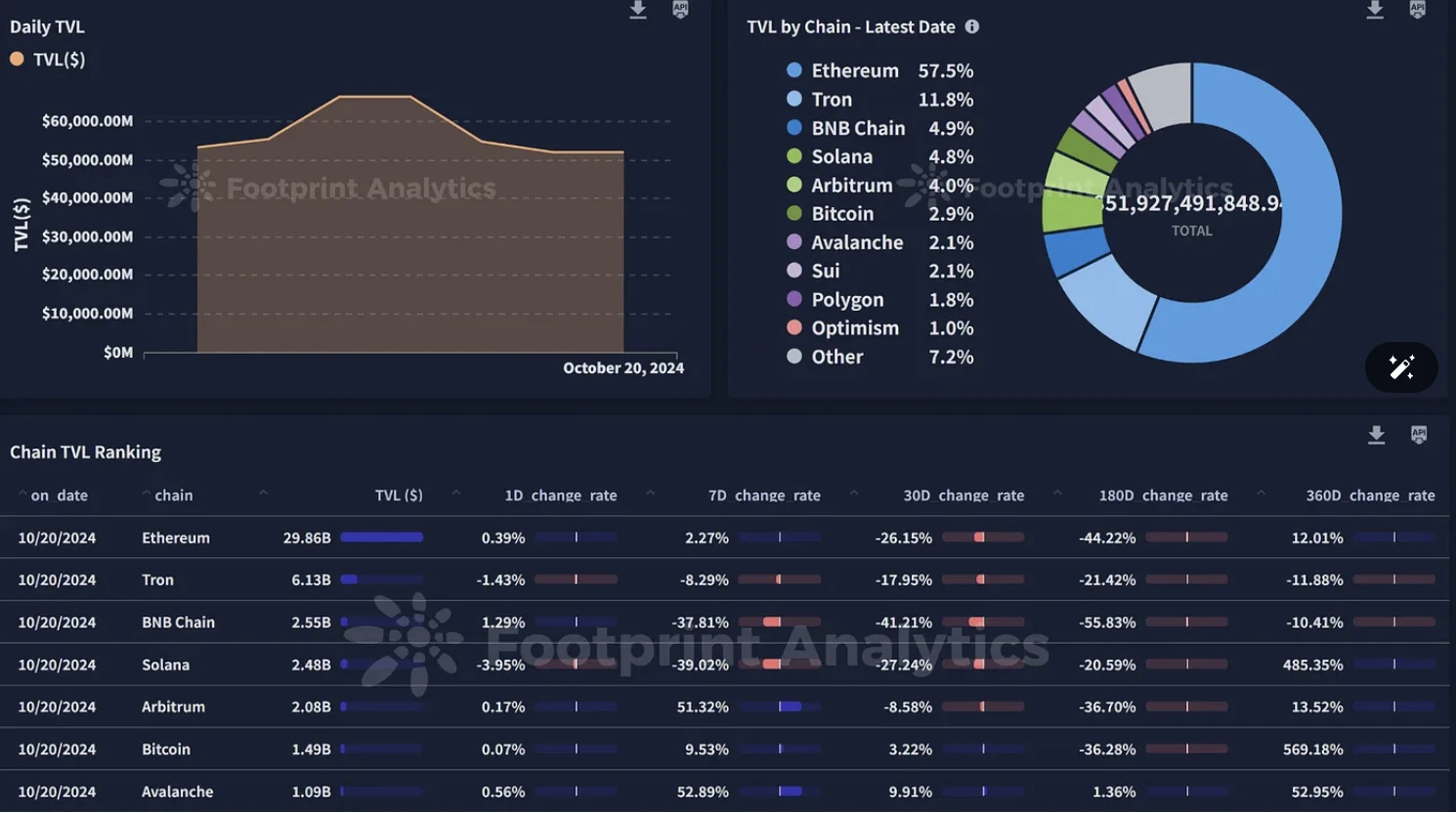
Analysis
Last week, TVL peaked in the middle of the week and then fell. The biggest drop in TVL was in BNB Chain and Solana. The reason may be that BNB Chain beacon chain validators will stop running verification before mid-November to complete the shutdown. At that time, BNB beacon chain will stop running and stop processing any new transactions. Then on the 17th, the lending agreement Radiant Capital announced that its Radiant lending market on the BNB Chain and Arbitrum networks was hacked, with a loss of approximately US$58 million.
As for the main reason for the decline in Solanas TVL, it is still due to the cross-chain rotation of profitable funds in the Meme sector and the regular capital flow caused by the exit, which should be considered a relatively healthy TVL outflow.
In terms of growth, Avalanche Protocol leads the entire public chain ecosystem, with TVL soaring by more than 50%, which should be attributed to the public chains development of the game sector. Game developer and publisher Faraway launched the Layer 1 blockchain FCHAIN powered by Avalanche, which will power the Faraway game ecosystem. Faraways support for FCHAIN includes not only integration into its game portfolio, but also integration of its creator, business and developer tool sets. This means that Avalanche will focus on vertical expansion in the future.
-2.3. EVM Layer 2 Summary
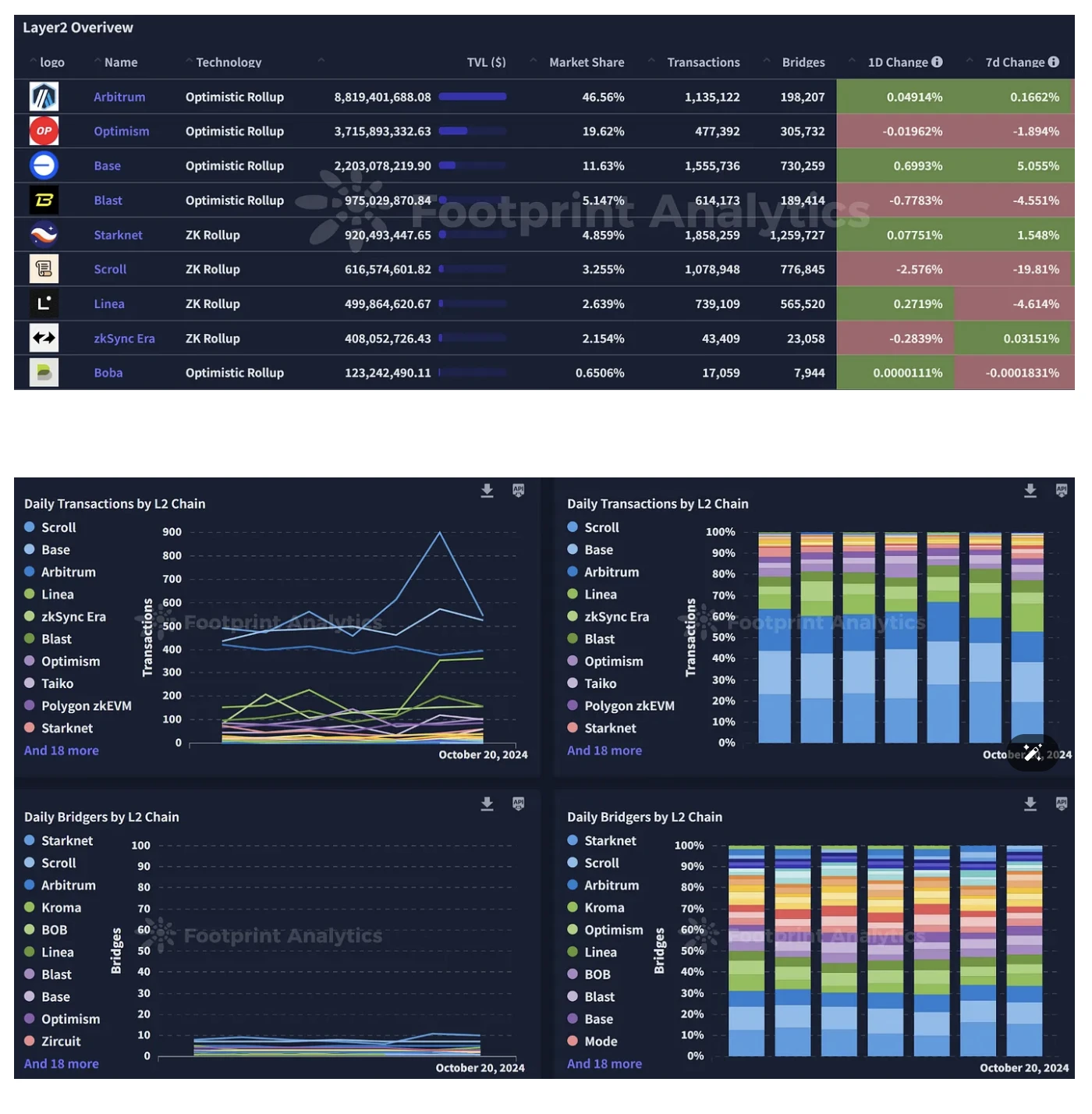
Analysis
Last week, the overall TVL of L2 continued to remain above 37 billion US dollars, and the TVL for the week rose by about 3.77% compared with the previous week. Among them, BaseTVL growth took the lead last week. When the head protocol of the ZK series fell by an average of more than 7%, Base rose by more than 5%. This is due to the Base research teams launch of the proof of concept (POC) of the cross-L2 call standard RIP-7755, which helps to achieve cross-chain interoperability between different Ethereum Layer 2 networks. The proof of concept of RIP-7755 is applicable to chains that comply with EIP-4788. Currently, the status of the OP Stack chain and Arbitrum can be verified. At the same time, ZetaChain has added support for the Base network. Through ZetaChains Universal EVM, users can access universal applications of Base, Bitcoin, Ethereum and other networks without switching networks. Many positive factors have stimulated the healthy growth of its TVL.
Scroll, whose TVL plummeted by more than 19%, faced a more severe situation. Its on-chain DEX Ambient officially stated that the Ambient Finance domain name had been hijacked on the 19th, and it was working with the storage team and the domain name registrar to solve the problem as soon as possible. Although the official said that the funds and contracts were safe and users should not interact with the front end, it still caused a certain panic. A whale withdrew a total of 7,595 ETH from Scroll within 8 hours that day, which indirectly led to a stampede of capital outflow.
As for Linea, after launching Chainlinks cross-chain interoperability protocol CCIP, it has not shown a significant increase in TVL, but has instead declined slightly.
-2.4. RWA Summary
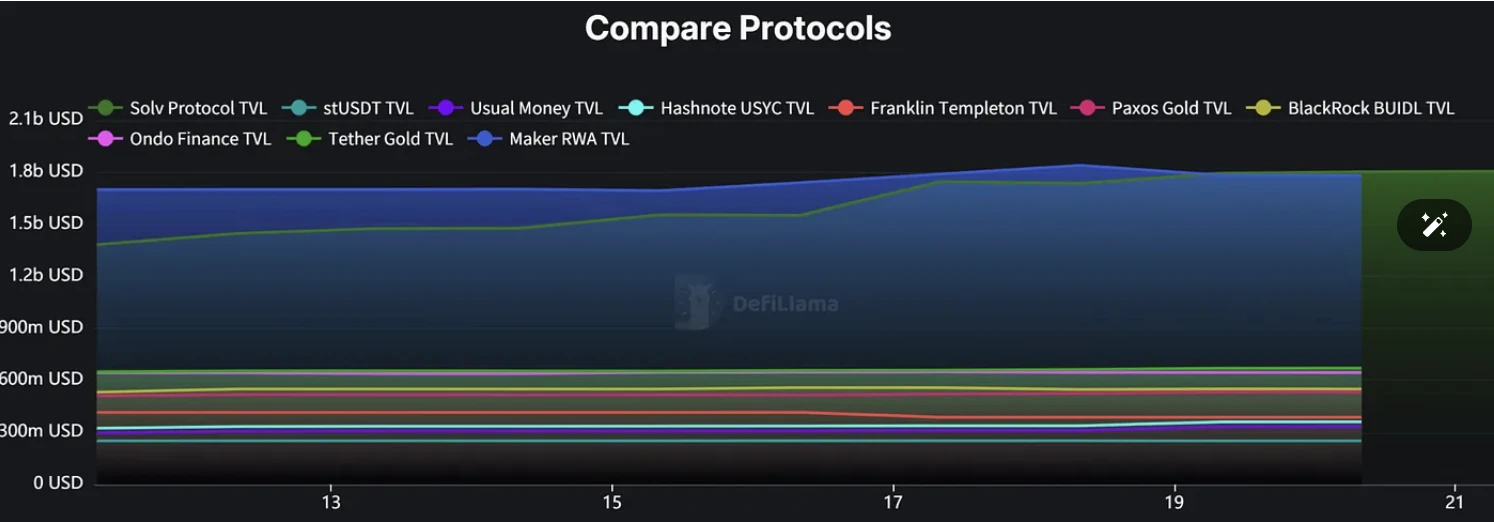
Analysis
Solv was the RWA protocol that performed well last week. Its TVL even surpassed Maker during the weekend and became the leader of the sector for a short time. The most significant positive news was that Solv Protocol announced the completion of a strategic round of financing of US$11 million. As of now, Solvs total financing has reached US$25 million. This round of financing will be used for Solvs pledge abstraction layer product development and ecological expansion, and to promote the development of Bitcoin pledge. Solv Protocol has established partnerships with multiple protocols such as Babylon Chain, Pendle, Ethena and CoreDAO to explore new use cases and revenue opportunities for Bitcoin.
Secondly, Solv Protocol launched a new LST product SolvBTC.JUP on BNB Chain, which provides an 8% annualized rate of return based on Bitcoin. Its underlying income source is Jupiter, a decentralized exchange on the Solana network. Currently, SolvBTC.JUP has attracted more than 13 million US dollars in pledged funds.
4. Macro data review and key data release nodes next week
The future direction of the Feds monetary policy is likely to continue to be accommodative, especially considering that the job market is not yet fully solid. Currently, the market generally predicts that the Fed will cut interest rates by 25 basis points in November with a probability of 92.3%. At the same time, as the US election day approaches, the uncertainty of the election results may continue to affect user sentiment. However, historical data shows that the fourth quarter is often a period of stronger performance for the US stock market, which may provide some support to the market.
In the current economic climate, the U.S. economy is facing multiple challenges from inflation, employment issues, and geopolitics, but there are also some positive potential factors, such as the strong momentum of technology stocks and the seasonal upward trend of the market. Investors should pay close attention to the upcoming corporate earnings reports and the Feds policy dynamics in order to adjust their strategies in a timely manner.
Important macro data nodes this week (October 21st - October 25th) include:
October 24: Initial jobless claims in the United States for the week ending October 19 (10,000 people)
October 25: Final value of the University of Michigan Consumer Confidence Index for October
V. Regulatory policies
There were no major policy and regulatory news in various regions around the world during the week, but US presidential candidate Kamala sparked a sharp rise in Bitcoin on Monday after releasing a friendly attitude towards cryptocurrencies. At the same time, other regions began to explore preliminary frameworks for taxation of cryptocurrencies as an asset class.
Hong Kong
Hong Kong Chief Executive John Lee announced the 2024 Policy Address, stating that the government will continue to promote the policy stance and guidelines for the application of artificial intelligence in innovative financial services such as central bank digital currency, mobile payment, virtual banking, virtual insurance, and virtual asset trading. On October 17, at the 10th Blockchain Global Summit hosted by Wanxiang Blockchain Lab, Hong Kong Special Administrative Region Legislative Council Member (Technology Innovation) Qiu Dagen said, I hope that Hong Kong can surpass the density of wealth management in Switzerland in the future. The government will consult on legislative proposals to regulate over-the-counter transactions of virtual assets in the next stage, and introduce independent regulatory legislation for virtual asset custody services.
USA
Harris proposed a new plan on Monday to provide loans to black entrepreneurs and others who face barriers to financing. According to Harris campaign outline for black male voters, the plan will provide 1 million loans with up to $20,000 forgiven. Harris also pledged to support a cryptocurrency regulatory framework to provide more certainty for the 20% of black Americans who own or have owned digital assets.
On the 19th, the U.S. Securities and Exchange Commission (SEC) approved the New York Stock Exchange (NYSE) and the Chicago Board Options Exchange (Cboe) to launch options trading linked to the Bitcoin spot ETF.
Italy
According to Italian newspaper Il Sole 24 Ore, Italian Deputy Finance Minister Maurizio Leo said in a conference call in Rome detailing the countrys budget plan that Italy plans to increase capital gains tax on Bitcoin investments from the current 26% to 42%. Maurizio Leo said, Since the 2023 tax year, after the introduction of several new rules for cryptocurrency taxation, capital gains over 2,000 euros ($2,180) have been taxed at 26%. However, this figure will now increase significantly.

